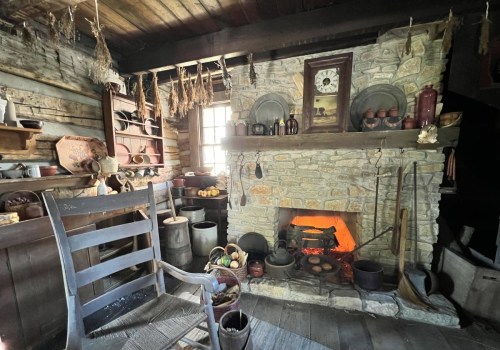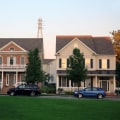As an expert in architecture, I have had the privilege of studying and analyzing the various styles and influences that have shaped the buildings and structures in Wayne County, Michigan. Located in the state of Michigan, Wayne County is home to the city of Detroit, which is known for its rich history and diverse culture. The county has a long and fascinating heritage that has greatly influenced its architecture, making it a unique and significant part of American history.
The Native American Influence
Before the arrival of European settlers, Wayne County was inhabited by various Native American tribes, including the Potawatomi, Ottawa, and Wyandot. These tribes had a deep connection to the land and their culture was reflected in their dwellings and structures.The most notable example of Native American architecture in Wayne County is the longhouse, which was a traditional dwelling made of wooden poles and bark. These longhouses were built to accommodate extended families and were often decorated with intricate designs and symbols that held cultural significance. The influence of Native American architecture can still be seen in some buildings in Wayne County today. For instance, the McGregor Memorial Conference Center at Wayne State University was designed by renowned architect Minoru Yamasaki, who incorporated elements of Native American design into the building's facade. The use of geometric patterns and earthy colors pay homage to the county's indigenous heritage.
The European Influence
In the 17th century, French explorers arrived in Wayne County and established settlements along the Detroit River.This marked the beginning of European influence on the county's architecture. The French brought with them their own architectural styles, such as French Colonial and Gothic Revival, which can still be seen in some buildings today. However, it was the arrival of British settlers in the 18th century that had a more significant impact on the county's architecture. The British brought with them their own architectural styles, such as Georgian and Victorian, which were popular during that time. These styles were characterized by symmetrical designs, grand facades, and intricate details. One of the most iconic examples of British influence on Wayne County's architecture is the Guardian Building in downtown Detroit.
Built in 1929, this Art Deco skyscraper features a blend of Gothic and Art Nouveau elements, which were popular in Europe during that time. The building's exterior is adorned with intricate carvings and sculptures, while the interior boasts a stunning lobby with colorful murals and marble floors.
The Industrial Revolution
In the late 19th and early 20th centuries, Wayne County experienced rapid growth and development due to the rise of the automotive industry. This period marked a significant shift in the county's architecture, as buildings were designed to accommodate the needs of factories and manufacturing plants. The most notable example of industrial architecture in Wayne County is the Ford Piquette Avenue Plant, which was built in 1904 and is considered the birthplace of the Model T. This building was designed by renowned architect Albert Kahn and is a prime example of his innovative use of reinforced concrete and natural lighting.The plant's design was also influenced by European industrial architecture, particularly German factories.
The Modern Era
In the mid-20th century, Wayne County saw a surge in modern architecture, as architects began to experiment with new materials and techniques. This era saw the rise of iconic buildings such as the General Motors Technical Center in Warren, which was designed by Eero Saarinen and is considered a masterpiece of modernist architecture. Another notable example of modern architecture in Wayne County is the Fisher Building, which was designed by Albert Kahn and completed in 1928. This Art Deco skyscraper is a symbol of Detroit's prosperity during the early 20th century and is known for its stunning lobby, which features marble floors, ornate ceilings, and intricate details.Preserving the Heritage
Despite the changes and developments in Wayne County's architecture over the years, there has been a concerted effort to preserve its heritage and history. Many buildings and structures have been designated as historic landmarks and efforts have been made to restore and maintain them. The Detroit Historical Museum, located in Midtown Detroit, is a prime example of this preservation effort. The museum showcases the county's rich history and features exhibits on Native American culture, European settlement, and the rise of the automotive industry.The building itself is a historic landmark, as it was built in 1951 and is considered a prime example of modernist architecture.









